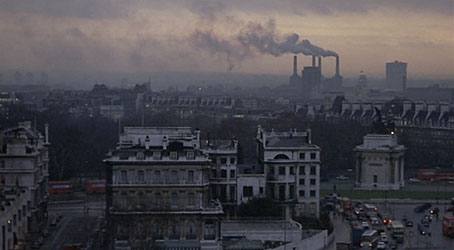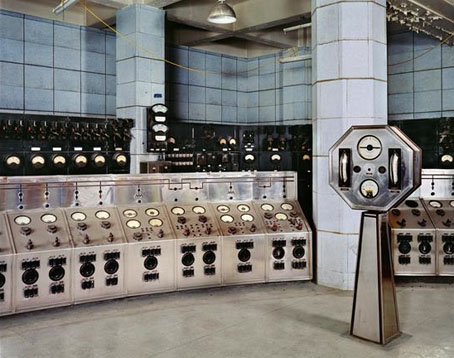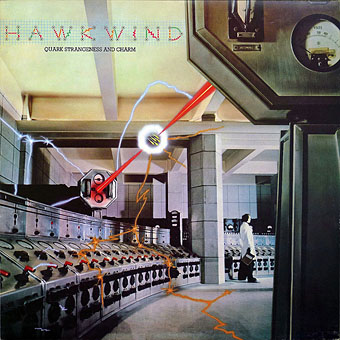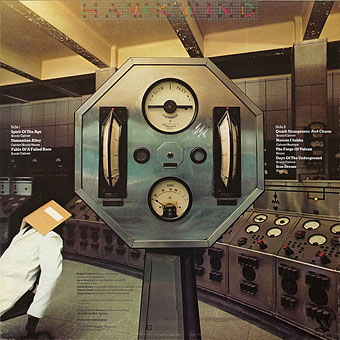A photograph of the control room of Battersea Power Station, London, by Michael Collins, one of a series which will shortly be on display at the Royal Institute of British Architects.
The images show Battersea Power Station as what Collins describes as a “twentieth century ruined castle” – a building that was built to last, with a high quality structure and interior, including Art Deco walls and ceilings.
Giles Gilbert Scott’s enormous temple of heavy industry continues to sit decaying on the banks of the Thames while property developers come and go. The latest of these, Real Estate Opportunities, has fallen into debt which means proposals to develop the site are once again on hold. A part of me likes the idea of the building sitting there unused and purposeless year after year, like some vast Steampunk Stonehenge; Giles Gilbert Scott’s other Thames-side power station, Bankside, was successfully transformed as Tate Modern, but we know from various proposals that the fate of Battersea, whether as theme park or shopping centre, is likely to be a lot less edifying.
It took redevelopment to transform Bankside from temple of industry to temple of culture but Battersea’s unmistakable presence has a powerful cultural history of its own. Everyone knows the Hipgnosis sleeve design for Pink Floyd’s Animals (1977); less familiar is the photos of the control room which Hipgnosis used for Hawkwind’s Quark, Strangeness and Charm the same year. I tend to prefer the back cover of this sleeve to the front; that octagonal readout device is more interesting than the rather unconvincing sparks and exchanges of energy. And speaking of energy, my former employers are still active, unlike the rancorous Floyd.
There’s a page here listing other uses of the power station, including its many film appearances which date back to the 1930s. That list mentions the control room’s use as a background for the “Find the Fish” sequence in Monty Python’s The Meaning of Life (1983) but they omit an earlier Monty Python appearance when you briefly see the building in operation during And Now for Something Completely Different (1971). It was closed down a few years later. So here it is, then, belching fumes over west London on a profoundly gloomy winter afternoon.

Elsewhere on { feuilleton }
• The album covers archive
Previously on { feuilleton }
• The Sonic Assassins
• The Bradbury Building: Looking Backward from the Future




I did not know that was the Battersea control room on that Hawkwind cover; thank you for enlightening me.
A disused power plant on the Baltimore Harbor has been successfully repurposed as a restaurant-and-retail center, a monument to consumer culture. Rather disappointing.
Finally, the “rancorous” Floyd? It seems to me the Brock-Turner feud is no less rancorous.
Ha! Yes, you’re quite right about Brock v. Turner. Also, to give some credit to Pink Floyd, it was Roger Waters’ idea to have a giant pig floating over a notable building. Hipgnosis suggested the power station but they also tried to get the band to accept a very different cover design which was a lot less dramatic. The band stuck to their guns and Hipgnosis in their books admit it was the correct decision.
That power plant in Baltimore was also an indoor amusement park for a (very) short while – 1985-1989. Also quite disappointing.
That last pic of the power station in its slightly less environmentally kind days is amazing! Couldn’t agree more about the ruined castle look too! I’ve heard a lot of people say that when I’ve been passed it on the train.
I had never heard of this building until a few days ago and I am completely enthralled by its art deco beauty.
It has recently been brought as a model to the virtual world Second Life where it is intended to remain in memory as it seems its fate is doomed